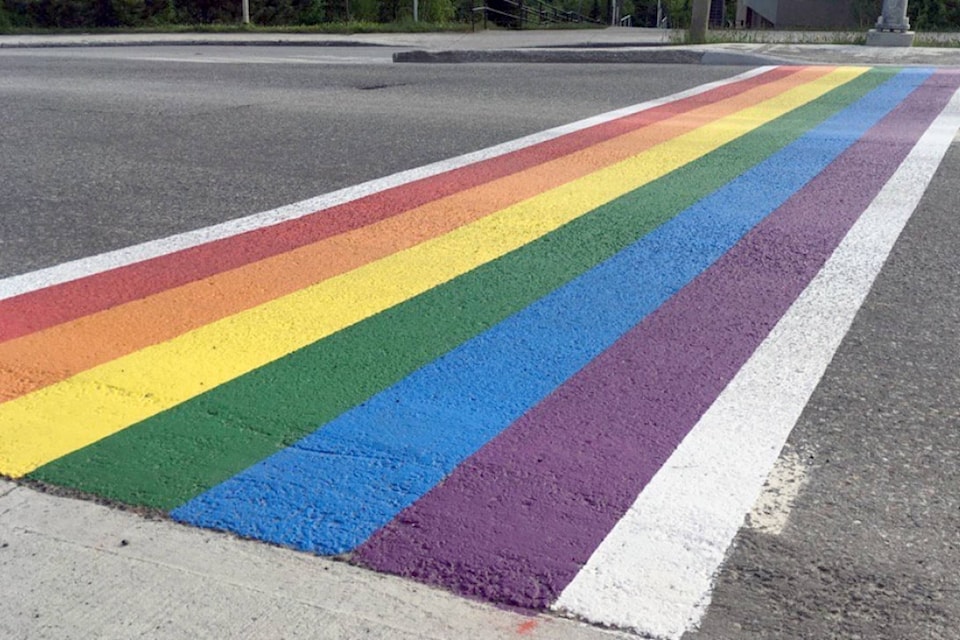A leading researcher of vulnerable and marginalized adolescents including LGBTQ students said more inclusive school climates — including Gay-Straight Alliances (GSAs) — reduced suicides and suicide attempts by 50 per cent for straight males in B.C. last year.
Dr. Elizabeth M Saewyc called it a “surprise find.”
“Suicidal thoughts and attempts actually go down by half [for straight males] in schools with GSAs and inclusive LGBTQ policies across the province,” Dr. Saewyc said.
She was initially researching population-focused health disparities for LGBTQ people. In trying to understand the disparities, she recognized that there were much higher rates of bullying, discrimination and stigma reported among LGBTQ people. In fact, the rate of discrimination experienced by students who identify as LGBTQ is three times higher than reported by heterosexual youth.
READ MORE: John White: Bullying leaves deep scars behind
On top of suicides and suicide attempts, myriad other health conditions were notably higher for LGBTQ youth. The reduction of suicide numbers for straight males might actually be tied to inclusive actions that improve conditions and reduce the same statistic for LGBTQ students, Dr. Saewyc surmised.
“A more supportive and inclusive climate creates an overall calm, lessening stress for straight people as well as those who identify within the LGBTQ community,” Dr. Saewyc said.
“Homophobic bullying, by boys especially, is a way of policing ‘how to be a guy.’ They use it to rag on boys who don’t fit the classic macho stereotype,” Dr. Saewyc said. “What we think might be happening is, when you’ve got a climate that supports and allows a diverse way of being — that it’s OK to be gay and bi and the different ways you can manifest being gendered — it takes pressure off of straight boys, too.”
Dr. Saewyc said straight males can approach masculinity without having their credentials as a straight male questioned.
“It creates more breathing room for everyone to be more comfortable with who they are,” Dr. Saewyc said.
“Being called gay — or if people think you’re gay, even if you’re straight — has an effect on mental health,” Dr. Saewyc said.
It’s the “minority stress” that goes with being a part of a marginalized group.
“We’ve learned that some of our society gives tacit permission for some kinds of bullying or harassment. People are figuring out gender identity and fitting in… everyone wants to be unique and fit in at the same time. It can be very challenging to not be a part of the group,” Dr. Saewyc said.
“People who don’t meet stereotypical norms end up being the target for a lot of the bullying and harassment as an ‘out’ group. Picking on people is a way for some to feel like they are a part of the ‘in’ group.”
When adults in the community don’t confront the harassment and don’t model supportive and inclusive behaviour, children feel like they have tacit approval. In places where adults are speaking out against LGBTQ people, children feel like they have permission to do the same.
Further, coming out is not an option for some children because their family would not support that admission, Dr. Saewyc said. Those children face the dual dilemma of bullying and the inability to open up to their parents for support.
GSA groups work to change the climate in schools. Dr. Saewyc said when schools have GSAs in place for at least a couple of years, it changes the level of reported discrimination and brings lower levels of the health concerns that are normally the key outcomes of bullying.
“Having the GSAs run by student groups, straight students can step up and be a part of advocating for inclusion and respect,” Dr. Saewyc said.
“It’s also important to recognize and be an important bystander. If you see someone being teased or threatened because of their gender orientation, step up. For adults, we have to speak out against stigma and discrimination when we see it.”
Cyberbullying is another, more recent manifestation for LGBTQ youth.
It is theoretically less harmful because there is no physical abuse, but continuous access through texting and social media means there is nowhere to hide.
“You can’t escape it easily. Bullies feel anonymous, and they can immobilize quick a mob of trolls to jump on a particular circumstance,” Dr. Saewyc said.
On the other hand, young people who might not get support where they live can find supportive friends and others online.
“Those groups can encourage them or celebrate them for who they really are so they feel safer about coming out, where they might not have that in their local community,” Dr. Saewyc said.
@johnkwhite
john.white@castlegarnews.com
Like us on Facebook and follow us on Twitter
